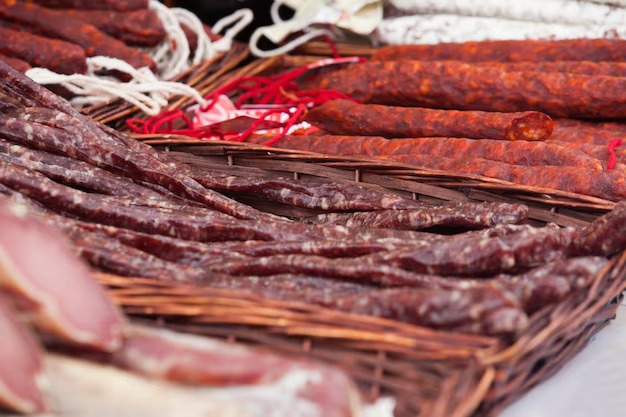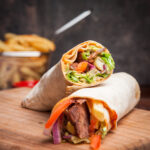Biltong, a South African delicacy, is not just a snack; it’s a cultural icon deeply ingrained in the nation’s culinary heritage. This savory, air-dried meat is a favorite among locals and visitors alike, boasting flavors that tantalize the taste buds and a texture that keeps you coming back for more. If you’ve ever wondered how to make biltong the South African way, look no further. Here’s a comprehensive guide to mastering this beloved treat:
Ingredients:
- 2-3 kg of lean beef (such as silverside or topside), thinly sliced
- 1 cup brown vinegar
- 1 cup Worcestershire sauce
- 1 cup coarse salt
- 1 cup ground coriander
- 2 tbsp black pepper, coarsely ground
- 2 tbsp brown sugar
- 1-2 tsp bicarbonate of soda (optional, for tenderizing)
Equipment:
- Biltong box or drying cabinet
- Hooks or clips for hanging
- Butcher’s twine
Instructions:
- Prepare the meat: Start by trimming any excess fat from the beef and slicing it thinly, against the grain, into strips about 2-3 cm wide. For best results, the meat should be as lean as possible.
- Marinate the meat: In a large mixing bowl, combine the brown vinegar, Worcestershire sauce, coarse salt, ground coriander, black pepper, and brown sugar. Add the sliced meat to the marinade, ensuring it is fully submerged. Cover the bowl and refrigerate for at least 4 hours, or preferably overnight, to allow the flavors to infuse.
- Drain and pat dry: Once marinated, remove the meat from the bowl and drain off any excess liquid. Pat the meat dry with paper towels to remove any excess moisture.
- Season the meat: In a separate bowl, mix together additional ground coriander and black pepper. Lightly sprinkle this mixture over the surface of each meat strip, ensuring an even coating.
- Optional tenderizing step: If desired, sprinkle a small amount of bicarbonate of soda over the meat strips to help tenderize them. Be cautious not to use too much, as it can affect the flavor.
- Hang the meat: Using butcher’s twine, hang the seasoned meat strips from hooks or clips in a well-ventilated area. Ensure that there is enough space between each strip to allow for air circulation.
- Dry the biltong: Place the biltong in a biltong box or drying cabinet set to the appropriate temperature and humidity levels. The ideal conditions for drying biltong are around 25-30°C with a relative humidity of 50-60%. Allow the meat to air dry for 3-5 days, depending on the thickness of the strips and desired dryness.
- Check for readiness: To test if the biltong is ready, gently squeeze a piece between your fingers. It should feel firm and slightly springy. The meat should also have a deep, rich color and a slightly sweet, tangy aroma.
- Slice and enjoy: Once dried to perfection, remove the biltong from the hooks and slice it thinly against the grain. Serve it as a snack on its own, or pair it with bread, cheese, and a glass of South African wine for the ultimate culinary experience.
Tips and Tricks:
- Experiment with different cuts of meat and marinades to find your perfect biltong flavor profile.
- Adjust the drying time and conditions based on your preferences for moist or dry biltong.
- Store biltong in an airtight container in a cool, dry place to maintain its freshness and flavor.
- Don’t be afraid to get creative with seasoning – try adding spices like garlic powder, chili flakes, or paprika for a unique twist.
Making biltong the South African way is not just a culinary endeavor; it’s a labor of love that pays homage to a cherished tradition. By following this guide and infusing your own personal touch, you’ll be able to create biltong that not only satisfies your cravings but also honors the rich heritage of South African cuisine. So roll up your sleeves, gather your ingredients, and embark on a flavorful journey to biltong perfection!








